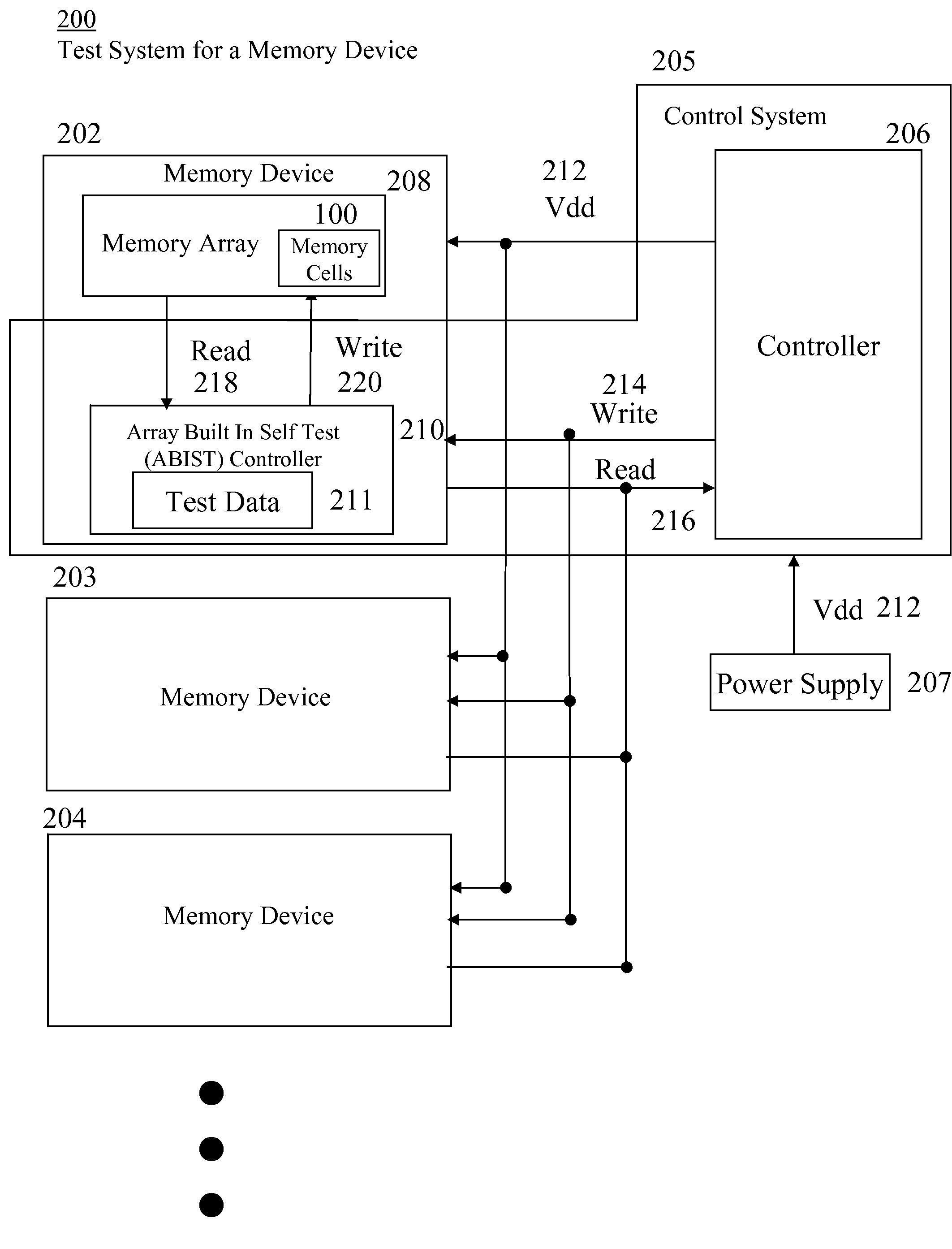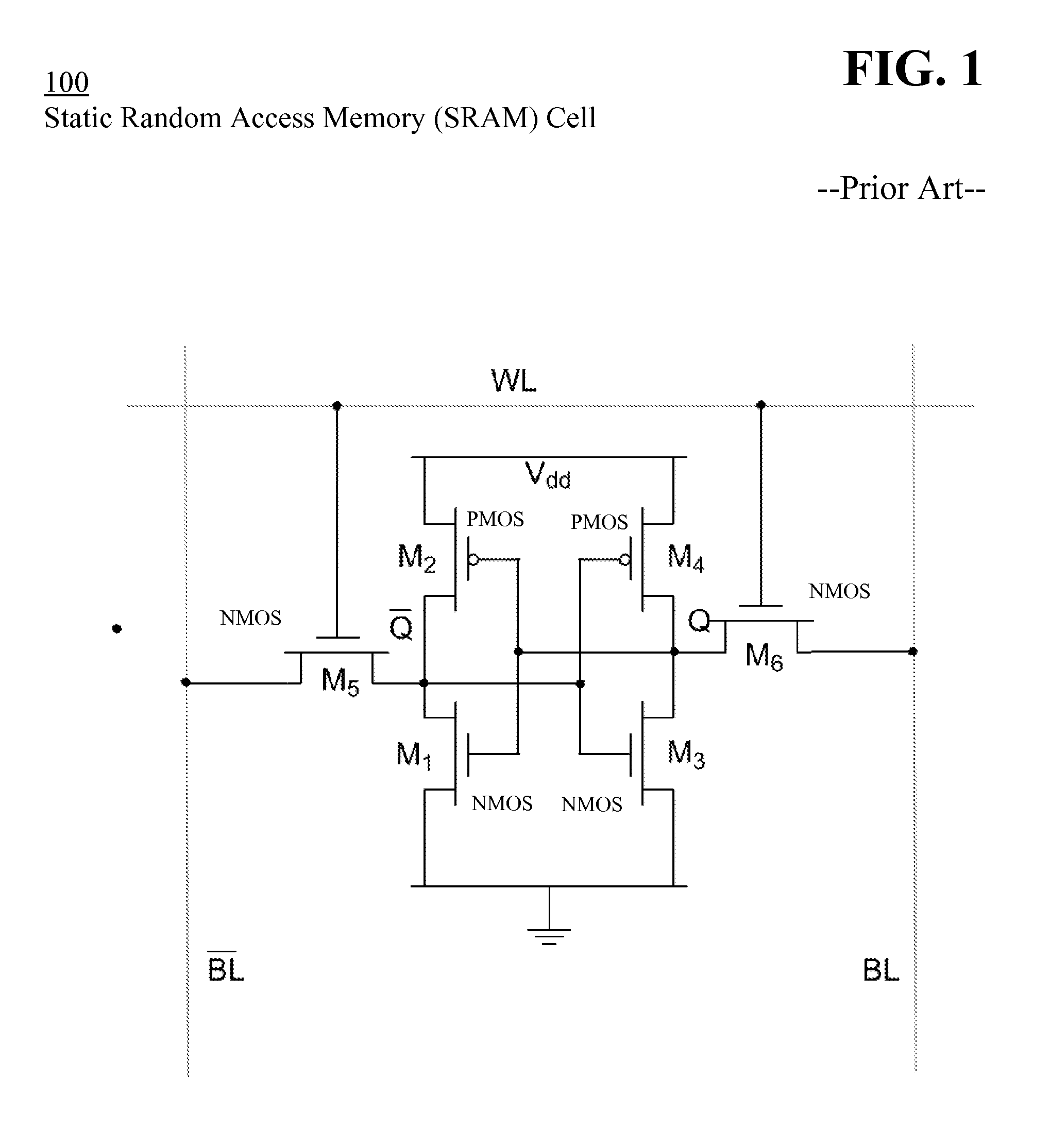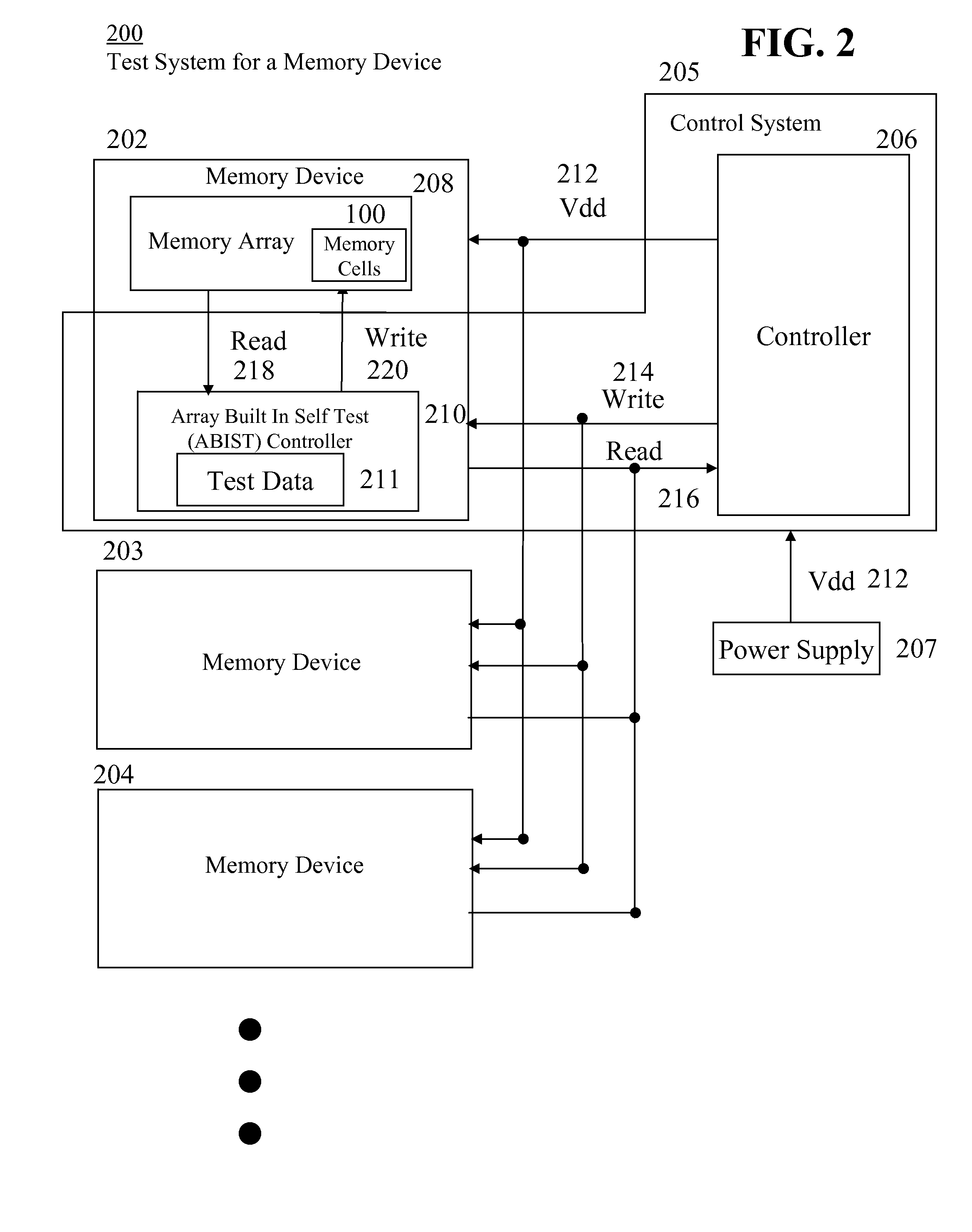Testing a memory device having field effect transistors subject to threshold voltage shifts caused by bias temperature instability
a technology of field effect transistor and threshold voltage, which is applied in the field of field effect transistor (fet) circuits, can solve the problems of pfet threshold voltage shift, sram is usually faster, more expensive than dram, and sram and dram are typically volatil
- Summary
- Abstract
- Description
- Claims
- Application Information
AI Technical Summary
Benefits of technology
Problems solved by technology
Method used
Image
Examples
Embodiment Construction
[0027]The following description and drawings are illustrative of the invention and are not to be construed as limiting the invention. Numerous specific details are described to provide a thorough understanding of the present invention. However, in certain instances, well-known or conventional details are not described in order to avoid obscuring the description of the present invention. References to one embodiment or an embodiment in the present disclosure are not necessarily to the same embodiment, and such references include one or more embodiments.
[0028]FIG. 1 illustrates static random access memory (SRAM) cell 100 having field effect transistors subject to threshold voltage shifts caused by bias temperature instability, according to the prior art. The SRAM cell includes six transistors and incorporates CMOS technology. The six transistors (M1-M6) typically include four n-channel metal-oxide-semiconductor field effect transistors (NMOSFET) (M1, M3, M5, M6) and two p-channel MOSF...
PUM
 Login to View More
Login to View More Abstract
Description
Claims
Application Information
 Login to View More
Login to View More - R&D
- Intellectual Property
- Life Sciences
- Materials
- Tech Scout
- Unparalleled Data Quality
- Higher Quality Content
- 60% Fewer Hallucinations
Browse by: Latest US Patents, China's latest patents, Technical Efficacy Thesaurus, Application Domain, Technology Topic, Popular Technical Reports.
© 2025 PatSnap. All rights reserved.Legal|Privacy policy|Modern Slavery Act Transparency Statement|Sitemap|About US| Contact US: help@patsnap.com



